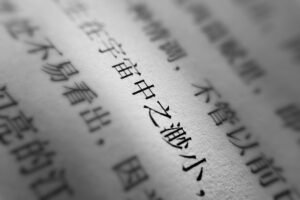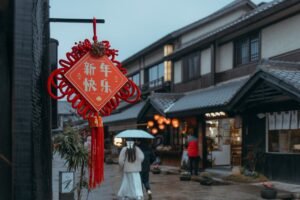Learning how to talk about vegetables in Chinese is essential for anyone interested in cooking, shopping at local markets, or simply expanding their vocabulary. This guide will help you master the essential Chinese terms and phrases related to vegetables, providing you with the knowledge needed to navigate conversations about food in China.
Table of Contents
ToggleBasic Vocabulary
Let’s start with some basic vegetable vocabulary. Here are common vegetables and their Chinese translations:
- Carrot – 胡萝卜 (hú luó bo)
- Potato – 土豆 (tǔ dòu)
- Tomato – 西红柿 (xī hóng shì)
- Onion – 洋葱 (yáng cōng)
- Garlic – 大蒜 (dà suàn)
- Lettuce – 生菜 (shēng cài)
- Cucumber – 黄瓜 (huáng guā)
- Bell Pepper – 甜椒 (tián jiāo)
- Broccoli – 西兰花 (xī lán huā)
- Cauliflower – 花椰菜 (huā yē cài)
- Spinach – 菠菜 (bō cài)
- Mushroom – 蘑菇 (mó gū)
- Peas – 豌豆 (wān dòu)
- Corn – 玉米 (yù mǐ)
- Zucchini – 西葫芦 (xī hú lú)
- Eggplant – 茄子 (qié zi)
- Celery – 芹菜 (qín cài)
- Cabbage – 卷心菜 (juǎn xīn cài)
- Beetroot – 甜菜根 (tián cài gēn)
- Asparagus – 芦笋 (lú sǔn)
- Pumpkin – 南瓜 (nán guā)
- Leek – 韭菜 (jiǔ cài)
- Radish – 萝卜 (luó bo)
- Turnip – 大头菜 (dà tóu cài)
- Parsnip – 欧防风 (ōu fáng fēng)
- Artichoke – 朝鲜蓟 (cháo xiǎn jì)
- Brussels Sprouts – 抱子甘蓝 (bào zǐ gān lán)
Common Chinese Vegetables
Chinese cuisine features many vegetables that might be less familiar to Westerners. Here are some typical Chinese vegetables and their translations:
- Bok Choy – 白菜 (bái cài)
- Chinese Cabbage – 大白菜 (dà bái cài)
- Choy Sum – 菜心 (cài xīn)
- Water Spinach – 空心菜 (kōng xīn cài)
- Chinese Broccoli – 芥兰 (jiè lán)
- Winter Melon – 冬瓜 (dōng guā)
- Bitter Melon – 苦瓜 (kǔ guā)
- Bamboo Shoots – 竹笋 (zhú sǔn)
- Lotus Root – 莲藕 (lián ǒu)
- Taro – 芋头 (yù tóu)
- Chinese Eggplant – 中国茄子 (zhōng guó qié zi)
- Napa Cabbage – 大白菜 (dà bái cài)
- Snow Peas – 荷兰豆 (hé lán dòu)
Describing Vegetables
When talking about vegetables, you might need to describe their color, taste, or texture. Here are some useful adjectives and their Chinese translations:
- Fresh – 新鲜 (xīn xiān)
- Ripe – 成熟 (chéng shú)
- Unripe – 未熟 (wèi shú)
- Raw – 生 (shēng)
- Cooked – 熟 (shú)
- Sweet – 甜 (tián)
- Bitter – 苦 (kǔ)
- Sour – 酸 (suān)
- Crunchy – 脆 (cuì)
- Soft – 软 (ruǎn)
- Juicy – 多汁 (duō zhī)
- Dry – 干 (gān)
Example Sentences:
- “The carrots are fresh.” – 胡萝卜是新鲜的。 (hú luó bo shì xīn xiān de)
- “The tomato is ripe.” – 西红柿是成熟的。 (xī hóng shì shì chéng shú de)
- “The cabbage is bitter.” – 卷心菜是苦的。 (juǎn xīn cài shì kǔ de)
- “I like my cucumbers crunchy.” – 我喜欢脆的黄瓜。 (wǒ xǐ huān cuì de huáng guā)
- “These strawberries are very juicy.” – 这些草莓非常多汁。 (zhè xiē cǎo méi fēi cháng duō zhī)
Buying Vegetables
When buying vegetables, it’s helpful to know some common phrases used at markets or grocery stores. Here are some phrases that might come in handy:
- How much does this cost? – 这个多少钱? (zhè gè duō shǎo qián)
- I would like to buy… – 我想买… (wǒ xiǎng mǎi…)
- Do you have fresh tomatoes? – 你有新鲜的西红柿吗? (nǐ yǒu xīn xiān de xī hóng shì ma)
- Can I get a bag of potatoes? – 我可以要一袋土豆吗? (wǒ kě yǐ yào yī dài tǔ dòu ma)
- Are these carrots organic? – 这些胡萝卜是有机的吗? (zhè xiē hú luó bo shì yǒu jī de ma)
- Can I taste this? – 我可以尝一下吗? (wǒ kě yǐ cháng yī xià ma)
- Is there a discount for buying in bulk? – 大批量购买有折扣吗? (dà pī liàng gòu mǎi yǒu zhé kòu ma)
Example Dialogue:
- Customer: “How much does this broccoli cost?” – 这个西兰花多少钱? (zhè gè xī lán huā duō shǎo qián)
- Vendor: “It costs twenty yuan.” – 二十元。 (èr shí yuán)
- Customer: “I would like to buy two.” – 我想买两个。 (wǒ xiǎng mǎi liǎng gè)
- Vendor: “Here you go. Anything else?” – 给你。还要别的吗? (gěi nǐ. hái yào bié de ma)
- Customer: “No, thank you.” – 不,谢谢。 (bù, xiè xiè)
Cooking with Vegetables
In the kitchen, knowing how to discuss cooking methods is crucial. Here are some common cooking verbs and their Chinese translations:
- To chop – 切 (qiē)
- To slice – 切片 (qiē piàn)
- To dice – 切丁 (qiē dīng)
- To boil – 煮 (zhǔ)
- To steam – 蒸 (zhēng)
- To fry – 炒 (chǎo)
- To roast – 烤 (kǎo)
- To grill – 烤 (kǎo)
- To bake – 烘焙 (hōng bèi)
- To peel – 削皮 (xiāo pí)
- To mash – 捣碎 (dǎo suì)
- To stir-fry – 煸炒 (biān chǎo)
- To simmer – 炖 (dùn)
Example Sentences:
- “Chop the onions and garlic.” – 切洋葱和大蒜。 (qiē yáng cōng hé dà suàn)
- “Boil the potatoes until they are soft.” – 煮土豆直到它们变软。 (zhǔ tǔ dòu zhí dào tā men biàn ruǎn)
- “Steam the broccoli for five minutes.” – 蒸西兰花五分钟。 (zhēng xī lán huā wǔ fēn zhōng)
- “Fry the mushrooms in butter.” – 用黄油炒蘑菇。 (yòng huáng yóu chǎo mó gū)
- “Peel the carrots before cooking.” – 烹饪前削皮胡萝卜。 (pēng rèn qián xiāo pí hú luó bo)
- “Mash the potatoes with some milk and butter.” – 将土豆与一些牛奶和黄油捣碎。 (jiāng tǔ dòu yǔ yī xiē niú nǎi hé huáng yóu dǎo suì)
Common Chinese Dishes with Vegetables
Understanding how vegetables are used in Chinese cuisine can also help you learn the language. Here are some common dishes and their ingredients:
- 麻婆豆腐 (mápó dòufu) – Mapo Tofu: Tofu cooked with minced meat, typically beef or pork, in a spicy bean-based sauce.
- 炒青菜 (chǎo qīng cài) – Stir-fried Green Vegetables: Often made with bok choy, spinach, or Chinese broccoli, stir-fried with garlic.
- 宫保鸡丁 (gōngbǎo jīdīng) – Kung Pao Chicken: A stir-fry dish made with chicken, peanuts, vegetables, and chili peppers.
- 糖醋里脊 (táng cù lǐ jǐ) – Sweet and Sour Pork: Pork stir-fried with bell peppers, pineapple, and a sweet and sour sauce.
- 酸辣土豆丝 (suān là tǔ dòu sī) – Hot and Sour Shredded Potatoes: Shredded potatoes stir-fried with vinegar and chili.
- 蒜蓉西兰花 (suàn róng xī lán huā) – Garlic Broccoli: Broccoli stir-fried with garlic.
- 红烧茄子 (hóng shāo qié zi) – Braised Eggplant: Eggplant braised with garlic, ginger, soy sauce, and sugar.
- 蚝油生菜 (háo yóu shēng cài) – Lettuce with Oyster Sauce: Lettuce stir-fried or steamed and topped with oyster sauce.
Example Sentences:
- “Today, I am making stir-fried green vegetables.” – 今天我做炒青菜。 (jīn tiān wǒ zuò chǎo qīng cài)
- “Would you like some garlic broccoli?” – 你想要蒜蓉西兰花吗? (nǐ xiǎng yào suàn róng xī lán huā ma)
- “Braised eggplant is a common dish in China.” – 红烧茄子是中国常见的菜肴。 (hóng shāo qié zi shì zhōng guó cháng jiàn de cài yáo)
- “Sweet and sour pork is popular among tourists.” – 糖醋里脊在游客中很受欢迎。 (táng cù lǐ jǐ zài yóu kè zhōng hěn shòu huān yíng)
Talking About Vegetables in a Restaurant
When dining out, you might want to ask about vegetable dishes or make specific requests. Here are some useful phrases:
- Do you have any vegetarian options? – 你们有素食选项吗? (nǐ men yǒu sù shí xuǎn xiàng ma)
- I am allergic to… – 我对…过敏。 (wǒ duì… guò mǐn)
- Can I have the salad without onions? – 沙拉可以不要洋葱吗? (shā lā kě yǐ bù yào yáng cōng ma)
- What vegetables are in this dish? – 这道菜里有什么蔬菜? (zhè dào cài lǐ yǒu shén me shū cài)
- Is this dish vegan? – 这道菜是素食的吗? (zhè dào cài shì sù shí de ma)
- Can I have an extra serving of vegetables? – 可以多加一份蔬菜吗? (kě yǐ duō jiā yī fèn shū cài ma)
- Is there a vegetable soup available today? – 今天有蔬菜汤吗? (jīn tiān yǒu shū cài tāng ma)
Example Dialogue:
- Customer: “Do you have any vegetarian options?” – 你们有素食选项吗? (nǐ men yǒu sù shí xuǎn xiàng ma)
- Waiter: “Yes, we have a vegetable stir-fry and a mixed salad.” – 是的,我们有炒青菜和混合沙拉。 (shì de, wǒ men yǒu chǎo qīng cài hé hùn hé shā lā)
- Customer: “What vegetables are in the stir-fry?” – 炒菜里有什么蔬菜? (chǎo cài lǐ yǒu shén me shū cài)
- Waiter: “It contains bell peppers, broccoli, carrots, and zucchini.” – 里面有甜椒、西兰花、胡萝卜和西葫芦。 (lǐ miàn yǒu tián jiāo, xī lán huā, hú luó bo hé xī hú lú)
- Customer: “That sounds great. I’ll have the stir-fry.” – 听起来不错。我就要炒菜。 (tīng qǐ lái bù cuò. wǒ jiù yào chǎo cài)
- Waiter: “Would you like any sides with that?” – 要配什么配菜吗? (yào pèi shén me pèi cài ma)
- Customer: “Can I get an extra serving of steamed broccoli?” – 可以多加一份蒸西兰花吗? (kě yǐ duō jiā yī fèn zhēng xī lán huā ma)
Growing Vegetables
If you’re interested in gardening, knowing how to talk about growing vegetables can be helpful. Here are some related terms:
- Garden – 花园 (huā yuán)
- Vegetable garden – 菜园 (cài yuán)
- Seed – 种子 (zhǒng zi)
- Plant – 植物 (zhí wù)
- Soil – 土壤 (tǔ rǎng)
- Watering can – 浇水壶 (jiāo shuǐ hú)
- Fertilizer – 肥料 (féi liào)
- Harvest – 收获 (shōu huò)
- Greenhouse – 温室 (wēn shì)
- Compost – 堆肥 (duī féi)
Example Sentences:
- “I have a vegetable garden in my backyard.” – 我在后院有一个菜园。 (wǒ zài hòu yuàn yǒu yī gè cài yuán)
- “I planted tomato seeds last spring.” – 去年春天我种了番茄种子。 (qù nián chūn tiān wǒ zhòng le fān qié zhǒng zi)
- “Remember to water the plants every day.” – 记得每天给植物浇水。 (jì de měi tiān gěi zhí wù jiāo shuǐ)
- “It’s time to harvest the carrots.” – 是时候收获胡萝卜了。 (shì shí hòu shōu huò hú luó bo le)
- “The greenhouse helps the plants grow faster.” – 温室帮助植物更快生长。 (wēn shì bāng zhù zhí wù gèng kuài shēng zhǎng)
- “We use compost to fertilize our vegetable garden.” – 我们用堆肥给菜园施肥。 (wǒ men yòng duī féi gěi cài yuán shī féi)
Conclusion
By learning how to talk about vegetables in Chinese, you’ll not only expand your vocabulary but also gain a deeper understanding of Chinese culture and cuisine. Whether you’re shopping at a local market, cooking at home, dining out, or even growing your own vegetables, these terms and phrases will help you navigate conversations about vegetables with confidence. Enjoy exploring the diverse world of Chinese vegetables and the rich culinary traditions that come with them!








